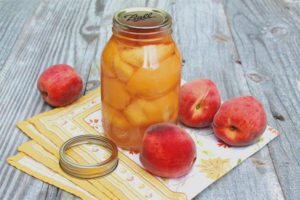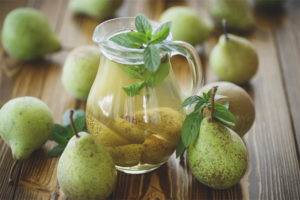The content of the article
Experts have developed a classic technology for the preparation of moonshine based on granulated sugar, and they have also developed effective ways to distill a drink. In order not to waste time and materials, we will tell you how to easily prepare an alcoholic drink at home. Consider important aspects and provide step-by-step instructions.
How to make sugar mash
Before starting moonshine, take care of the container, it must be perfectly clean and dry. Wash cans with baking soda, rinse with warm water, then pour over boiling water. Sterilize containers in a convenient way. You can put them upside down in the oven or boil them by placing them in a pot of water. After all the manipulations, wipe the container dry and leave it at room temperature until the moisture evaporates completely.
Technology for making sugar mash
To get high-quality moonshine, use the classic cooking technology. At the exit you have more than 5 liters of drink with a strength of about 40 degrees. All the ingredients presented are subject to correction, since the ratio of the components is selected taking into account possible changes.
- purified drinking water - 19 liters.
- granulated sugar (preferably beet) - 6.3 kg.
- citric acid - 28 gr.
- dry yeast - 125 gr.
Stage number 1. Choosing the right proportions
- First you need to determine the amount of moonshine that you want to get at the exit. When preparing a drink on your own, you will have about 1.2-1.25 liters. from 1 kg. granulated sugar, the fortress will remain the same - 40 degrees.
- It is recommended to increase the amount of each component by 15%, for certain reasons, the yield of the final product is lower by exactly the specified value. Changes in quantity are achieved due to possible incorrect distillation, temperature conditions, and the quality of the raw materials used.
- For 1 kg. granulated sugar accounts for 22-25 g. dry baker's yeast, 3.5 l. filtered (drinking) water. Also need another 0.5 liters. fluid if you decide to carry out the inversion procedure.
Stage number 2. Sugar Inverting
- By inversion, it is customary to understand the preparation of a syrup based on citric acid and granulated sugar. This must be done for the reason that during the fermentation of the composition, the sugar is first broken down, and fructose with glucose is obtained. Later, the listed monosaccharides are processed by yeast into an alcohol base.
- On the surface of sugar crystals, there are so-called pathogenic microorganisms that multiply under favorable conditions (optimal temperature, humidity). Since mash has its own special aroma, foreign odors are undesirable, for these reasons it is necessary to prevent the growth of harmful bacteria.
- Moonshine made from inverted granulated sugar turns out to be tastier, fermented faster. If you wish, you can skip this step, but we recommend that you do not. So, if you adhere to the advice, we will tell you how to cook the right syrup.
- For cooking, prepare a large enameled pan with thick walls and a bottom, pour 3.5 liters into it. drinking water, put on medium heat, heat to 75 degrees. After that, reduce the power of the burner, pour 6.3 kg. sugar, start slowly stirring with a wooden spatula.
- Make sure that the sand does not stick to the walls of the tank, otherwise it will burn. Bring the mass to a homogeneous state, then add power to a mark above the minimum, but below average, let the syrup boil.Stew the mixture for another 7-10 minutes, constantly remove the foam from the surface of the mass.
- Next, you must carefully (!) Pour citric acid in an amount of 28 g. When adding the product to the sand, the foam rises very high, so do not rush to pour everything all at once, proceed step by step. As soon as citric acid is in the pan, reduce the stove to minimum, close the container with a lid, simmer for about 1 hour on low heat.
Stage number 3. Water treatment
- Do not neglect this stage, since it is the basis of the final product. In the process of making mash, only purified water is used without taste, color or smell.
- If you make moonshine on sugar, pre-settle already filtered water for 2-3 days. Only after this period it can be used.
- Thanks to this filtration, harmful impurities settle at the bottom of the tank and stiffness decreases. After settling, the liquid must be drained from the sediment using a thin medical tube.
Important!Never distill or boil water to make mash. As a result of such actions, the oxygen necessary for fermentation is lost.
Stage number 4. The connection of sugar with water
- Pour sugar syrup into a fermentation tank, add 19 l. pre-defended cold water. In cases where non-inverted granulated sugar is used, the product is previously dissolved in warm water.
- Be sure to stir the composition intensively so that the granules completely dissolve. Both ordinary and inverted sugar are mixed with liquid, while the temperature of the final product should be in the range of 26–29 degrees.
- Do not fill the fermentation can with more than 2/3 of the total volume. If you neglect this recommendation, the foam will begin to accumulate and flow out of the can. As a result, you will be forced to collect the product from the floor surface.
Stage number 5. Adding yeast
- When dry yeast is added to the must, they must first be activated. To carry out the procedure correctly, use the manufacturer's recommendations, which can be found on the back of the bag.
- As a rule, if the water is hot, it needs to be cooled to a mark of 31-34 degrees. Next, dry yeast is poured in accordance with the given proportions, the dilution tank is covered with a lid.
- While insisting the composition, the bowl or jar in which the yeast is located is wrapped in a thick towel and then taken to a warm place with a stable temperature regime.
- After half an hour, a cap is formed on the basis of the ascended yeast in the container, this sign indicates that the product is ready to be added to the wort.
- If you use baker's yeast for making moonshine, do not be alarmed when you see a possible formation of foam falling over the boundaries of the container with the brew.
- To extinguish the foam, add the usual store cookies in the amount of 15 gr. or 18 ml. olive / vegetable oil. It is important to realize that such components will not affect the quality of the final product.
Stage number 6. Wort fermentation
- This step involves installing a water seal on the neck of the tank. As soon as such manipulations are completed, transfer the vessel to a room with a stable temperature regime (27-30 degrees).
- Be sure to make sure that the room does not have sharp jumps in temperature, otherwise the yeast will not be able to fully develop. In cases with the preparation of the composition on sugar, which passed the inversion, the mash turns out to be soft, has a caramel smell and does not spoil the air of the room.
- To maintain optimal temperature conditions, cover the container with warm blankets, cover with pillows or wrap in old fur coats. You can also enclose the bank with building materials responsible for thermal insulation.
- As a rule, the fermentation stage lasts about 4-10 days, in most cases 5-7 days are enough.Once at 14 hours it is necessary to take a jar of braga and shake it vigorously for 45 seconds. In this case, do not remove the water seal. Such a move will reduce the amount of carbon dioxide, which interferes with the full action of the yeast.
Stage number 7. Checking the readiness of the mash
It is necessary to evaluate the readiness of sugar mash in order to be able to further distill the composition. Consider the relevant signs by which you can determine whether the product is ready or not:
- completion of hissing;
- the smell of alcohol is distinctly felt;
- the composition has a bitter taste, as the yeast has already processed granulated sugar into alcohol;
- the absence of gurgling in the water seal indicates that carbon dioxide has ceased to be released;
- mash has a light shade, sediment forms at the bottom;
- when you bring a burning match to the braga, it does not go out, continuing to burn.
At this stage, it is important to identify from 2 to 6 signs, this will be evidence of the readiness of the mash to distill. If there are less than two signs, you can easily make a mistake.
For example, a large amount of granulated sugar leads to early death of the yeast, they do not have time to process everything. For the most part, the yeast begins to "nap" in alcohol, the concentration of which exceeds the mark of 12%. As a result, the ready-made mash will remain sweet.
Stage number 8. Lightening and degassing
- Remove the mash from the sediment using a thin tube, transfer to a saucepan, place the container on the stove and heat to 48-52 degrees. After degassing the mash, pour it back into the vessel and lighten with bentonite (if possible).
- Bentonite is a natural white clay. It is important that the product contains no aromatic additives, otherwise they will completely ruin the moonshine.
- To lighten 25 liters. mash you need about 60 gr. bentonite. Clay must first be ground in a coffee grinder, and then mixed with 275 ml. slightly warm water. After that, mix the clay to a pasty consistency and wait about a quarter of an hour.
- After the specified period, add diluted bentonite to the mash, close the lid, shake the composition for 2 minutes, then leave the composition for 25 hours and proceed to distillation.
Stage number 9. Moonshine
- Prepare a distillation cube, drain the clarified mash from the precipitate. Now you need to separate the alcohol from other components, this will help you to distill the first stage.
- The procedure is carried out at low power. Prepare an exit in advance in several parts: the head and body. Collect the first 50 ml in a separate jar. moonshine, which is obtained from 1 kg. Sahara. As calculations show, the first 300 ml. determine the head, it is used only for technical purposes.
- Next, you need to collect the body of moonshine, it is this fraction that you can drink. The selection of this part stops at the moment when the strength of the jet of drink falls below the mark of 40 degrees. To correctly evaluate the indicator, use an alcohol meter.
Stage number 10. Purification, second distillation, sedimentation
- An ideal cleaning option is to use activated carbon or potassium permanganate mixed with baking soda. The main condition is to dilute the distillation of the first stage with distilled water before cleaning, so that the strength of the composition drops to 20 degrees.
- For fire safety, use only diluted moonshine for a second haul. Pour it into a special cube, start the procedure on low heat.
- Cut off the heads that are unsuitable for use (the first 50 ml. Of the composition, which are obtained from 1 kg. Granulated sugar).
- Proceed to the selection of the main part, as in the previous case, until the fortress drops to below 40 degrees.
- Dilute the product to the desired strength, bottle, cork and send to infuse in a cool place.
Making moonshine requires patience, certain theoretical, and better practical skills and attention to detail. It turned out that the Russians love such a drink more than store products, and this is not surprising. Follow the instructions, monitor the proportions, do not violate the deadlines.
Video: how to clean moonshine










Submit